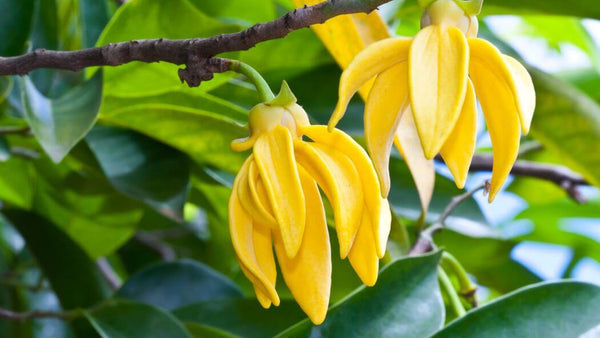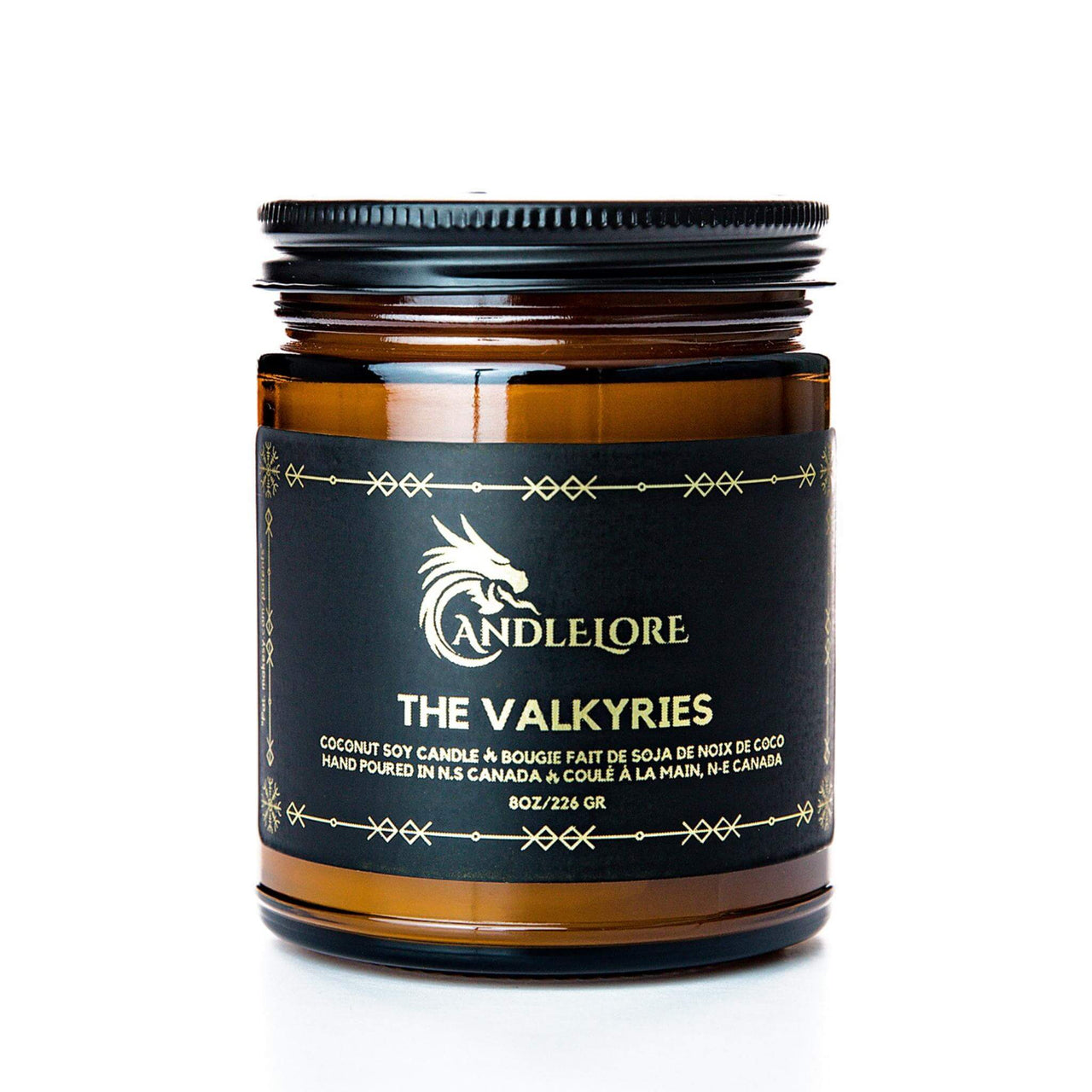Prepare to be transported to a world of intoxicating beauty and alluring aromas with the unveiling of the enchanting scent of ylang ylang. With its unique scent and ability to help promote relaxation, this refreshing aroma is perfect for unwinding after a long day or creating an inviting atmosphere in any space. So if you’re asking yourself, just what does ylang ylang smell like, then read on!
In this blog post we’ll dive deep into the enchanting world of aromas and help decode how this plant can benefit us both mentally and physically.
Unveiling the Scent of Ylang Ylang
This floral fragrance, derived from the tropical ylang ylang tree, boasts a tantalizingly sweet and exotic scent. Used in perfumery for centuries, ylang ylang has become a cherished ingredient for perfumers looking to add a touch of luxury to their creations. The fragrance is known for its romance promoting qualities, making it a popular choice for romantic occasions. So put on some wax melts, pour yourself a glass of wine, and let the captivating scent of ylang ylang take you on a journey to paradise. Let’s keep going, and check out what it’s aroma is like.
Defining Fragrance: What Does Ylang Ylang Smell Like?
Fragrances are such a fascinating aspect of our daily lives. And when it comes to specific scents, it's interesting to dive deeper into what makes them unique. Take Ylang Ylang, for example. This tropical tree blooms flowers that produce a distinct aroma.
But what does Ylang Ylang smell like, exactly? It's a sweet, floral scent with hints of spice, but it’s not as simple as that. Some describe it as having a "heady" quality, which means it can be quite strong. But that's part of what makes it so alluring.
The scent of ylang ylang has been described as a blend of jasmine, neroli, and gardenia with a hint of spice. Its rich and complex aroma has layers that unfurl slowly, so it's a scent that you can savor over time. Inhaling the fragrance of ylang ylang is like taking a deep breath of fresh air in a lush meadow, surrounded by blooming flowers and chirping birds.
Interestingly, the smell of ylang ylang changes over time. The first note is sweet and slightly fruity, which fades into a floral heart note. The scent then deepens into a musky and slightly spicy base note. This unique transformation of fragrance makes ylang ylang a versatile ingredient in perfumery.
Its intensity and complexity is what gives the flower it’s appeal. So next time you come across this intriguing fragrance, take a moment to stop and smell the Ylang Ylang.
Ylang Ylang in Perfumery: The Exotic and Floral Symphony
Ylang Ylang is a wonderfully exotic flower that has been used in perfumery for centuries. Its scent is floral, delicate, and captivating which makes it an ideal ingredient for many fragrances in the market. Perfumers all over the world recognize the unique characteristics of this flower; its sweet aroma has the power to instantly transport you to exotic locales, while its floral symphony can evoke a sense of sophistication and elegance. The Ylang Ylang fragrance is highly desired for its ability to create a unique signature scent that lingers, captivating everyone around you. It's why candle makers love using, so if you're looking for a fragrant floral experience, the Ylang Ylang scent is definitely worth exploring.
Scent Pairings: Complementing Fragrances for Ylang Ylang
Ylang Ylang aroma is a fresh and floral fragrance that is both captivating and stimulating. But have you ever considered pairing it with other scents to create a more complex aroma?
Here are some complementary fragrances that work well with Ylang Ylang: lavender, bergamot, jasmine, and sandalwood. Lavender adds a soothing and calming effect, while bergamot brings a subtle citrus note that blends perfectly with the floral scent. Jasmine is also a floral scent that adds depth and exoticism to the Ylang Ylang aroma, while sandalwood brings a woody and warm base note. So next time you feel like experimenting with fragrances, try these scent pairings and see how Ylang Ylang transforms into something even more incredible.
What Is Ylang Ylang?
Ylang ylang, scientifically known as Cananga odorata, is a tropical tree native to the Philippines, Indonesia, and Malaysia. Its name is derived from the Tagalog language meaning "flower of flowers" and it produces a distinctively sweet and floral scent that has been used in perfumes and aromatherapy for centuries.
The essential oil extracted from the Ylang Ylang flower is highly prized for its calming and relaxing properties, making it a popular choice for those seeking a natural and holistic approach to wellness. From massage oils to scented wax candles, the Ylang Ylang scent is revered for its ability to transport us to a place of inner peace and tranquility.

The Rich History Of Ylang Ylang
The alluring scent of Ylang Ylang has a rich history that dates back centuries. Its distinct sweet and floral aroma has captivated the senses of people around the world for years. This tropical flower has long been associated with celebratory events, from weddings to religious ceremonies. The ancient Polynesians even used Ylang Ylang in their traditional medicine to treat various health conditions.
Historically, the sweet and floral scent of ylang ylang has been highly valued in Southeast Asian societies, where it was often used to adorn the hair and clothing of their royal and elite classes. For instance, it was used extensively in the Javanese and Malay royal courts, where the fragrance of ylang ylang was believed to arouse passion and desire. In addition, it was also commonly used in traditional medicine for its sedative, antiseptic, and aphrodisiac properties.
Ylang ylang's popularity, however, is not limited to Asia alone. From the late 19th century onwards, it was highly sought after in Europe, and it was used extensively in perfumery. Indeed, the scent of ylang ylang was a particular favorite of the legendary French fashion icon, Coco Chanel. In fact, it was an essential component of the iconic perfume, Chanel No. 5, which remains one of the most popular and iconic fragrances of all time.
As time passed, this fragrant flower grew in popularity, and today, it is a staple in the world of perfumery, found in things like body care, diffusers, as well as candles and scented wax melts. Whether you're a fragrance enthusiast or simply appreciate a pleasant smell, the history of Ylang Ylang is one that will captivate you.
Varieties of Ylang Ylang: A Detailed List Of Different Strains and Their Scents
Ylang Ylang, a highly aromatic flower, is known for its sweet, heady fragrance. With its popularity on the rise, it is no wonder that Ylang Ylang comes in different strains with unique scents. If you are someone who appreciates the sweet scent of Ylang Ylang and wants to delve deeper into its fragrant nuances, read on for a detailed list of different strains and their scents.
explore ALL the different strains of Ylang Ylang along with their scent profiles.
1. Ylang Ylang Extra
Ylang Ylang Extra, also known as Grade A, is the highest quality of Ylang Ylang essential oil. It's extracted from the first distillation process and has a sweet, floral, and delicate aroma. It's known for its calming, relaxing, and uplifting properties, making it a popular choice in aromatherapy.
2. Ylang Ylang I
Ylang Ylang I, also known as Grade B, is obtained from the second distillation process. It has a slightly less sweet and more intense aroma than Ylang Ylang Extra and is commonly used in making perfumes and hair care products.
3. Ylang Ylang II
Ylang Ylang II, also known as Grade C, is obtained from the third and fourth distillation processes. It has a strong, heavy, and spicy aroma and is often used to make soaps, candles, and room sprays.
4. Ylang Ylang III
Ylang Ylang III, also known as Grade D, is extracted from the fifth and sixth distillation processes. It has a very intense, sharp, and pungent aroma and is mainly used in making industrial products such as detergents and cleaning agents.
5. Ylang Ylang Complete
Ylang Ylang Complete is a blend of all the different grades of Ylang Ylang essential oil. It has a well-rounded, floral, and sweet aroma, making it a popular choice in making perfumes, hair care products, and massage oils.
Beyond Aroma: The Therapeutic Uses of Ylang Ylang Oil
The sweet, floral scent of ylang ylang is unmistakable, but did you know that this captivating aroma can also have therapeutic benefits beyond simple aromatherapy? Ylang ylang oil has been used for centuries in traditional medicine to combat a range of ailments, including anxiety, depression, and insomnia. Studies have shown that ylang ylang oil can help reduce stress and anxiety levels, and promote relaxation.
But ylang ylang isn't just good for your emotional well-being. It also has a variety of physical health benefits. For example, it is known to have antiseptic and antifungal properties, which can help treat various skin conditions like acne, eczema, and fungal infections.
Ylang ylang is also believed to have cardiovascular benefits. It can help regulate heart rate and lower blood pressure, which can reduce the risk of heart disease.
In addition, ylang ylang has been used for centuries as an aphrodisiac. It is said to enhance sexual desire and improve libido in both men and women.
So next time you smell the alluring fragrance of ylang ylang, remember that it may pack more than just a pleasing aroma.
Cultural Connections: Ylang Ylang in Cultures Over The Years
From the tropical regions of Southeast Asia, the sweet and exotic scent of ylang ylang has travelled across different cultures throughout the years. Its alluring fragrance has been used in various forms, from aromatherapy in modern spas to traditional medicines and even as an essential ingredient in perfumes.
In Indonesia, the flower is not only admired for its aroma, but also for its symbolic significance in weddings and funerary rituals. Meanwhile, in the Philippines, the ylang ylang fragrance has been popularized in hair products and as a sweet flavoring for desserts. The cultural connections of ylang ylang may differ across regions, but its enchanting smell remains as its unifying factor.
Emotional Influence: How Ylang Ylang Aroma Affects Mood
Have you ever experienced the soothing effects of ylang ylang smell? This fragrant oil is extracted from the flowers of the Cananga tree and has been known to significantly improve mood and overall emotional wellness. The sweet, floral scent of ylang ylang oil is calming and can help reduce stress and anxiety. Its aroma carries a mysterious quality that can awaken feelings of passion and seduction. Ylang ylang oil has also been said to promote relaxation, ease feelings of anger, and combat depression. It has been used in aromatherapy for centuries to uplift the mood and promote feelings of happiness. Next time you're feeling down, take a whiff of ylang ylang to uplift your mood and start feeling better.
Aromatherapy and Ylang Ylang: A Journey to Wellness
Let’s embark on a journey to wellness with the help of the magical scent of ylang ylang. This sweet and floral aroma has been used for centuries in aromatherapy to alleviate stress and promote relaxation. The ylang ylang scent is believed to help balance emotions and uplift the spirit, making it a popular choice for those in search of inner peace and calmness. Its therapeutic properties make it a popular ingredient in natural beauty and skincare products, too. So, why not indulge in the peaceful and calming benefits of ylang ylang aroma and take the first step towards a healthier you?

From Flower to Bottle: The Extraction Process of Ylang Ylang Oil
Ylang ylang oil is a highly prized essential oil with a delicate floral scent that's wildly popular in perfumes and other aromatic products. But how exactly is this sweet-smelling oil made? The answer can be found in the extraction process. Ylang ylang oil is extracted from the flowers of the ylang ylang tree, which is native to the tropical regions of Southeast Asia. Once the flowers are harvested, they go through a steam distillation process that involves crushing and fermenting the petals. The resulting oil is then filtered and refined until it's ready for use in a wide range of products.
The oil extracted from its flowers has a complex composition of over 250 chemical constituents, including linalool, geranyl acetate, benzyl acetate, benzyl benzoate, and methyl benzoate.
Ylang Ylang's complex aroma profile changes as it matures. The first distillation of the flowers results in a heady, intense aroma that is frequently used in top-notes. Later distillations of ylang-ylang produce a softer, fruity and floral aroma that is perfect for roundness and depth in perfumes.
The extraction process might sound simple, but the result is a complex oil with a rich blend of aromatic compounds that's prized by perfumers and aromatherapists around the world.
Unexpected Uses: The Role of Ylang Ylang in Food and Beverages
Ylang Ylang, the fragrant flower known for its use in perfumes and aromatherapy, may come as a surprise in the world of food and beverages. However, this flower has been used in various dishes and drinks, adding a unique and exotic flavor to the mix.
In Southeast Asian cuisine, ylang ylang flowers are used as a flavoring agent in many dishes. They have a sweet and floral aroma with a hint of spiciness that adds depth to dishes like soups, curries, and stir-fries. The flowers are often used in their dry form, but can also be used fresh.
One popular culinary use of ylang ylang is in rice dishes. In Indonesian cuisine, nasi ulam is a rice dish that is cooked with a variety of herbs and spices, including ylang ylang flowers. The flowers are added towards the end of the cooking process, infusing the rice with their unique aroma and flavor.
Ylang ylang is also used in desserts and other sweet treats. In Malaysia, onde-onde is a popular dessert made with glutinous rice flour and filled with a sweet palm sugar filling. The balls are then coated in freshly grated coconut that has been infused with ylang ylang flowers. The result is a sweet, floral, and nutty flavor that is irresistible.
Aside from being used in food, ylang ylang is also used in beverages. The flowers are infused in water to make a tea that is believed to have calming and soothing properties. The tea has a sweet and floral flavor, much like the flowers themselves.
In the cocktail world, ylang ylang is used as a flavoring in many tropical drinks. Its sweet and floral notes pair well with rum, coconut, and other tropical flavors. Bartenders use ylang ylang tinctures or syrups to add a unique twist to classic cocktails or to create their own signature drinks.
With its unexpected uses in the culinary world, ylang ylang continues to captivate our senses and enrich our taste buds.
Sustainability Concerns: The Cultivation and Trade of Ylang Ylang
Ylang ylang is a sweet-smelling flower that is highly sought after in the fragrance industry. Unfortunately, the cultivation and trade of ylang ylang comes with its own set of sustainability concerns. The flower is primarily grown in tropical areas such as the Philippines, Madagascar, and Comoros. Due to the high demand for ylang ylang, farmers could over-harvest the flowers, leading to soil degradation and deforestation. Additionally, the labor-intensive process of harvesting and extracting the essential oil from the flowers needs to focus on good living conditions and wages for workers. It is crucial for the fragrance industry to find sustainable solutions to ensure the preservation of ylang ylang and the well-being of those involved in its cultivation and trade.
The Sensual Allure of Ylang Ylang's Aroma
The ylang ylang scent has a powerfully seductive allure that has made it a favorite ingredient in perfumes and aromatherapy for centuries. From its early beginnings in the Philippines to its use as an offering of peace in French Polynesia, Ylang Ylang embodies culture and emotion.
Traditionally used for perfumery purposes, it has also become more widely accepted in cuisine, beverages, and even therapeutic treatments. The ylang ylang smell is known to promote relaxation and reduce anxiety, making it a popular choice for relaxation and meditation. This unique fragrance is also said to stimulate passion and desire, making it a favorite for creating romantic atmosphere. Whether you're looking to unwind after a stressful day or to ignite romance, the ylang ylang scent is an alluring choice for anyone seeking a sensory escape.
To discover how the scent of Ylang Ylang can enhance your state of being, click the link below to get a Ylang Ylang blended candle for your space!




